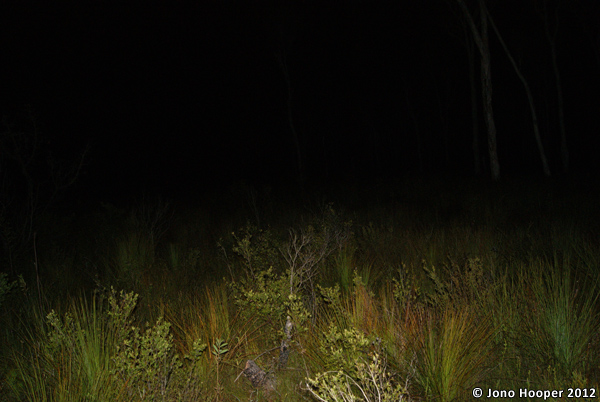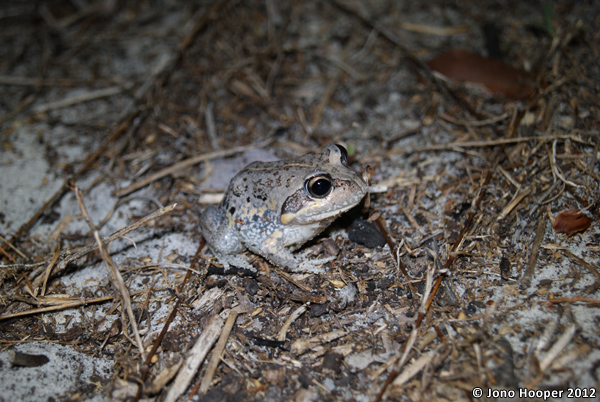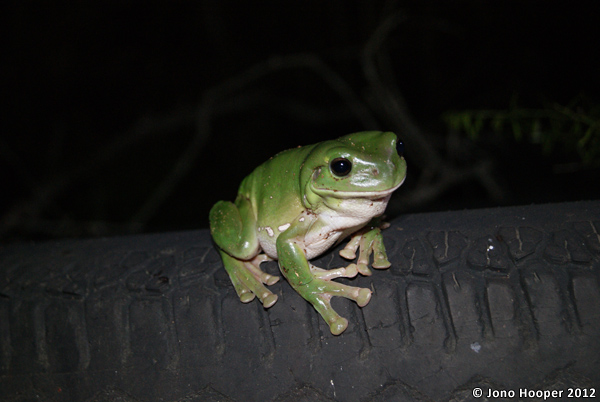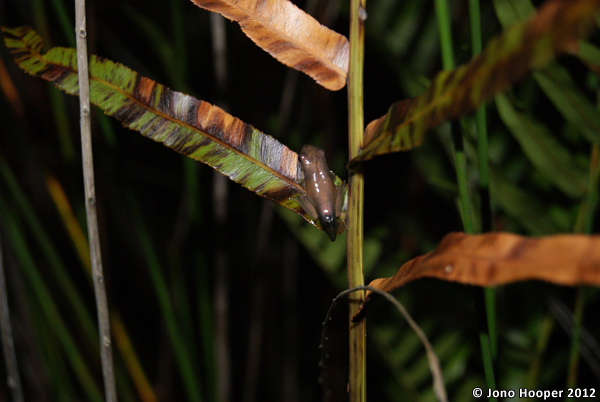Ok, the night wasn’t much longer than others I’ve been out frogging on, but hopefully you’ll appreciate the play on words 😛
I was looking forward to the 15th October. Not only because it was my birthday, but also because I’d been invited by Harry Hines from the Department of Environment and Heritage Protection (DEHP) to join him-self, Ed Meyer, Jesse, Adam, Michelle and Matt to assist with monitoring of Litoria olongburensis (Wallum sedgefrogs) in Bribie Island National Park. I’ve previously been with these guys back in February this year so was looking forward to joining them again. Once we all met up at 6pm, on went the waders, headlamps and camera gear. Once Harry saw the cloud of mosquitoes swarming around Jesse’s head, he also thought it a good idea to put on some insect repellent like we’d all done. We looked quite the part once we were all geared up. Gosh, what we’ll do for frogs! That’s half the fun anyway. The two monitoring teams for the night were then finally decided, and after a quick-fix of a light covering off the back of the 4WD and the sighting of 500 or so bats flying by above us, we headed off!
The team I was in comprised of Harry, Adam and Michelle and myself. Our first transect was completely dry underfoot, as a result of scarce rainfall for a few months. Usually all four transects are covered by water. We could hear no frogs calling at both beginning and end of the transect and it turns out we only found 22 L. olongburensis (Wallum sedgefrogs) and one L. fallax (Eastern sedgefrog).
Litoria olongburensis (Wallum sedgefrog)



Whilst we’re searching, Harry tells us off the time Ed accidentally sat on and killed a particular bird species of which I can’t remember the name. It’s now a museum specimen. At the completion of our search, we met up with the other group and we’re unperturbed by learning that they found ~180 L. olongburensis plus four L. tyleri (Laughing treefrogs). Ok, I lied. We were distraught. We had a pep talk amongst ourselves afterwards.
After arriving at Site 3, our team’s last site for the night, Harry tells us they’ve found L. caerulea (Green treefrogs) here before. A moment after telling us this he finds one just in from where we’d parked. We’re excited and begin taking photos. Whilst our cameras are flashing Harry spots another only a metre or so away from the first.

Once we’d blinded them both, we head back out to the vehicle track whilst still surveying the area with our headlamps. I spot some eye-shine other than spider eyes and discover they belong to a Limnodynastes terraereginae (Scarlet-sided pobblebonk). I’d seen one before but this guy was quite smaller.

On our way to the transect Harry spots a tyre-frog AKA another L. caerulea (Green treefrog).

Once we’d finally reached the transect we find it still underwater (only up to our knees) despite the minimal rainfall. During our search we hear several L. olongburensis calling sporadically and receive encouragement that we’ll find lots more frogs than our previous search. Site 1 isn’t known for finding a great amount of frogs anyway apparently. To compete with the other team, they’d have to find only ~5 frogs – highly unlikely since Site 4 is known for finding a large number of frogs and for holding the most water as I found in February (we were in up to our chests). From memory, I think we found 118 frogs at our last site. Ed’s team found ~98 (we win! 😛 ).



Once we returned to the other team, we find them appearing to be searching for something. Harry interprets the situation as “Once we find Ed’s headlamp we’ll begin our frog monitoring”.
It was a great night to be out frogging with everyone there and a great way to spend the final hours of my birthday. I hope to join them there again in January.
